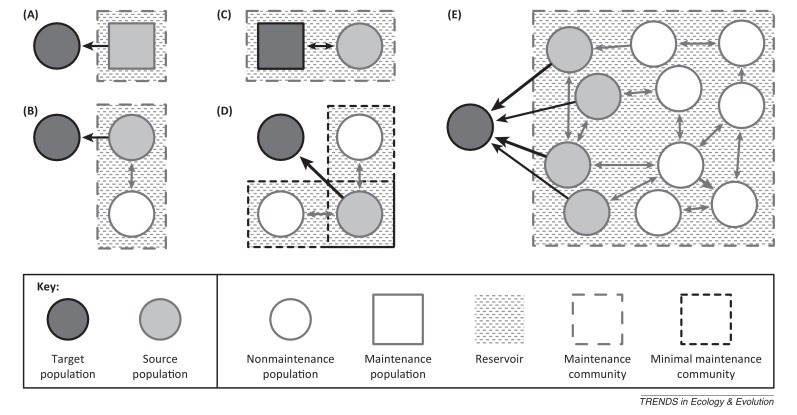Figure I.

Illustrative examples of reservoir–target systems. Arrow thickness denotes rate of transmission. In (A), the reservoir comprises a single source maintenance population that transmits to a nonmaintenance target population. In (B), the reservoir comprises two connected nonmaintenance populations (of which one is the source) that together form a maintenance community. In (C), the target is a maintenance population and a source of infection and, thus, is part of the reservoir. In (D), the reservoir comprises three nonmaintenance populations, together forming two minimal maintenance communities each capable of maintaining the pathogen; together, these form a larger maintenance community. In (E), the reservoir comprises a maintenance community of multiple connected nonmaintenance populations, four of which are source populations. Modified from [5].
